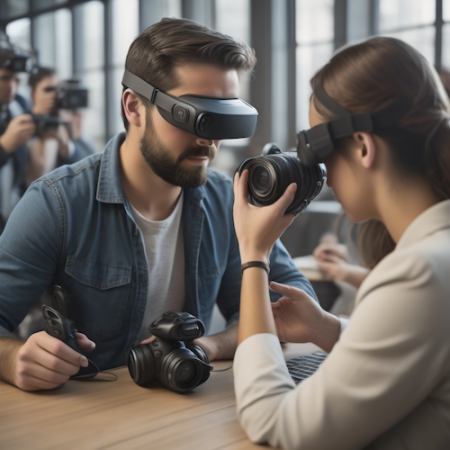My Prompt
“Write a lengthy article on the topic ‘interaction design and immersive experiences’ with the title ‘Implications of interaction design and immersive experiences in healthcare sector and its work environment,’ for a creativity-savvy audience, aiming to explain how something works. The article will have the following structure: Title, introduction, 3 H2 sections, 4 H3 sections. The H3 sections will be subsections of the H2 sections. You will format the article in markdown. You will use a communicative writing style, an engaging sentiment, and an informal communicative register. You will present some information from an H2 or H3 section as a bulleted list. You will include verified and reliable sources to support what you write. You will write a catchy meta title of 40 characters and a meta description of 120 characters.”
Ai Tools: ChatGPT4, Bard, Dall-e-2
My Article
Meta Title:
Immersive Healthcare: Interaction Design and Experience in Healthcare
Meta Description:
How interaction design and immersive experiences are transforming the healthcare sector and its work environment. Learn about the impact of augmented reality, virtual reality, and other technologies.
Introduction:
The healthcare sector is undergoing a rapid transformation, driven by the convergence of technology, design, and patient-centricity. Interaction design and immersive experiences are playing a pivotal role in this transformation, shaping the patient journey, enhancing clinical workflows, and improving healthcare outcomes.
Enhancing the Patient Journey with Immersive Experiences:
Immersive experiences are transforming the patient experience, making it more personalized, engaging, and supportive. Augmented reality (AR) and virtual reality (VR) are being used to create virtual tours of hospital facilities, allowing patients to familiarize themselves with their surroundings and reduce anxiety. VR is also being used to provide pain management, training patients on surgical procedures, and guiding them through rehabilitation exercises.
Augmented Reality for Hospital Tours:
AR apps can overlay virtual information onto the real world, providing patients with a more immersive and interactive experience. For instance, an AR app could guide patients through the hospital, highlighting their appointment locations, pointing out amenities, and providing real-time information about hospital services.
Virtual Reality for Pain Management:
VR can be used to create immersive environments that distract patients from pain and promote relaxation. Therapists can guide patients through VR experiences that utilize relaxation techniques, nature scenes, or even virtual journeys to exotic locations.
Virtual Reality for Surgical Training:
VR is revolutionizing surgical training, allowing surgeons to practice procedures in a realistic virtual environment without the risks associated with operating on live patients. This can significantly reduce medical errors and improve patient safety.
Virtual Reality for Rehabilitation:
VR can be used to create personalized rehabilitation programs that challenge patients and track their progress. Therapists can guide patients through VR exercises that help them regain mobility, strength, and coordination.
Optimizing Clinical Workflows with Interaction Design:
Interaction design is improving clinical workflows, enhancing communication, and promoting patient-centered care. Intuitive user interfaces (UIs) on medical devices and software applications are making it easier for healthcare professionals to access information and perform tasks efficiently.
Intuitive User Interfaces for Medical Devices:
Intuitive UIs on medical devices and diagnostic tools can reduce reliance on written instructions and improve the accuracy of patient care. Clear and concise icons, menus, and voice commands can make it easier for healthcare professionals to operate these devices without interrupting patient care.
Interactive Patient Education:
Interactive patient education systems can provide personalized and engaging information to patients. Gamification techniques and interactive animations can make learning more enjoyable and increase patient understanding of their medical conditions.
Collaborative Workflow Management:
Collaborative workflow management tools can streamline communication and coordination among healthcare professionals. Real-time updates on patient information, task assignments, and progress reports can enhance teamwork and improve patient outcomes.
Shaping the Future of Healthcare with Immersive Experience:
The future of healthcare is likely to be shaped by further advancements in interaction design and immersive experiences. Virtual assistants, augmented reality overlays, and interactive holograms could become commonplace in hospitals, providing personalized care, education, and support for patients.
Conclusion:
Interaction design and immersive experiences are transforming the healthcare sector, enhancing patient experience, optimizing clinical workflows, and shaping the future of healthcare. As these technologies continue to develop, we can expect even more innovative and effective applications that improve the quality of care for all.


